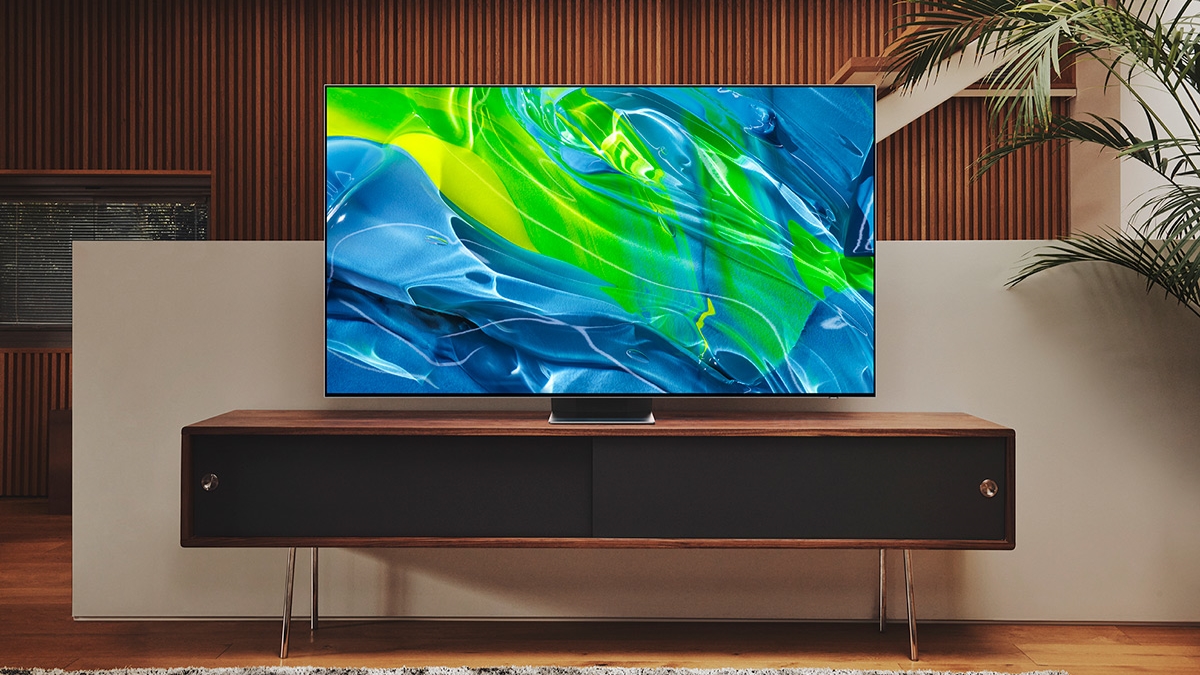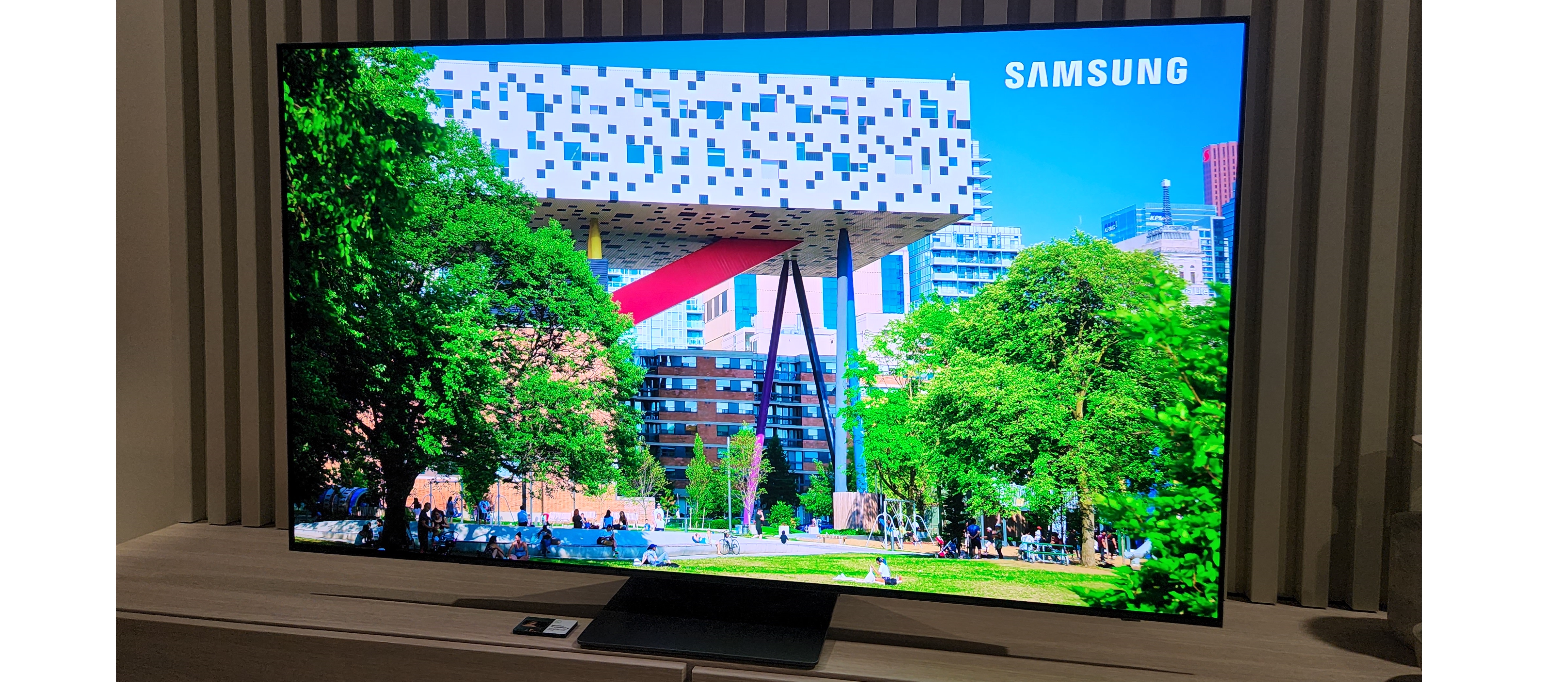Samsung's smaller OLED TVs would be very good news for your wallet
Next-gen QD-OLED TVs are reported to come in smaller sizes, and the price could drop, too

Samsung is launching its first 4K OLED TVs this year – and not just any OLED TVs. They use a new kind of OLED panel called QD-OLED, which mixes the Quantum Dot color-enhancing tech from Samsung's QLED TVs with OLED pixels. And in our Samsung S95B hands-on the results look very promising indeed.
However, like all new technologies there are some downsides, and in the case of QD-OLED, it's the price and the sizes. All of the best OLED TVs are pretty premium, but Samsung's are set to be near the upper end of the price range, and the Sony A95K (which uses the same QD-OLED panel) will be even more expensive.
And this year there will only be 55-inch and 65-inch sizes of these TVs – so anyone who needs to go smaller for space reasons, or wants to go bigger for awesome-home-theater reasons, is out of luck.
But a new report from the screen-specialist analysts at DSCC (via FlatpanelsHD) says that Samsung Display (the part of Samsung that makes the panels) will be able to introduce 49-inch and 77-inch models next year, following changes to its manufacturing processes.

While we're obviously happy about that on its own, what may be even more pleasing is the news that Samsung Display is aiming to drastically improve the yield efficiency of its manufacturing, which will mean the price of each individual panel sold can drop.
Manufacturing yield refers to how many of the products you manufacture are actually sellable. Electronics are complex, and it doesn't take much of a mistake or defect for a product to simply not work. If you have a yield of 50%, that means fully half of your production is going to waste – and the cost of all that waste has to be included in the price of the ones you can sell.
QD-OLED was reported as struggling with yield early on, but Samsung Display has recently said it's achieved 75% yield, and is aiming for 90% yields by the end of the year. So even if the company doesn't cut costs in any other way, that will lower prices (assuming Samsung achieves its aims).
Get daily insight, inspiration and deals in your inbox
Sign up for breaking news, reviews, opinion, top tech deals, and more.
When you combine the fact that Samsung will have to charge less for a smaller TV anyway (although, perhaps not a lot less if the LG C2's new, barely-cheaper 42-inch model is anything to go by), we should see the entry cost of this next-gen challenger for our list of the best TVs come down at least a little next year.
Of course, regular OLED screens will likely keep dropping in price in the meantime, so whether QD-OLED advantages, such as higher brightness and a wider color gamut, make it feel worth the higher cost (even if it's a slightly smaller premium) remains to be seen.
- If you don't want wait until next year for your new Samsung TV, check out our list of the best Samsung TVs available today.

Matt is TechRadar's Managing Editor for Entertainment, meaning he's in charge of persuading our team of writers and reviewers to watch the latest TV shows and movies on gorgeous TVs and listen to fantastic speakers and headphones. It's a tough task, as you can imagine. Matt has over a decade of experience in tech publishing, and previously ran the TV & audio coverage for our colleagues at T3.com, and before that he edited T3 magazine. During his career, he's also contributed to places as varied as Creative Bloq, PC Gamer, PetsRadar, MacLife, and Edge. TV and movie nerdism is his speciality, and he goes to the cinema three times a week. He's always happy to explain the virtues of Dolby Vision over a drink, but he might need to use props, like he's explaining the offside rule.